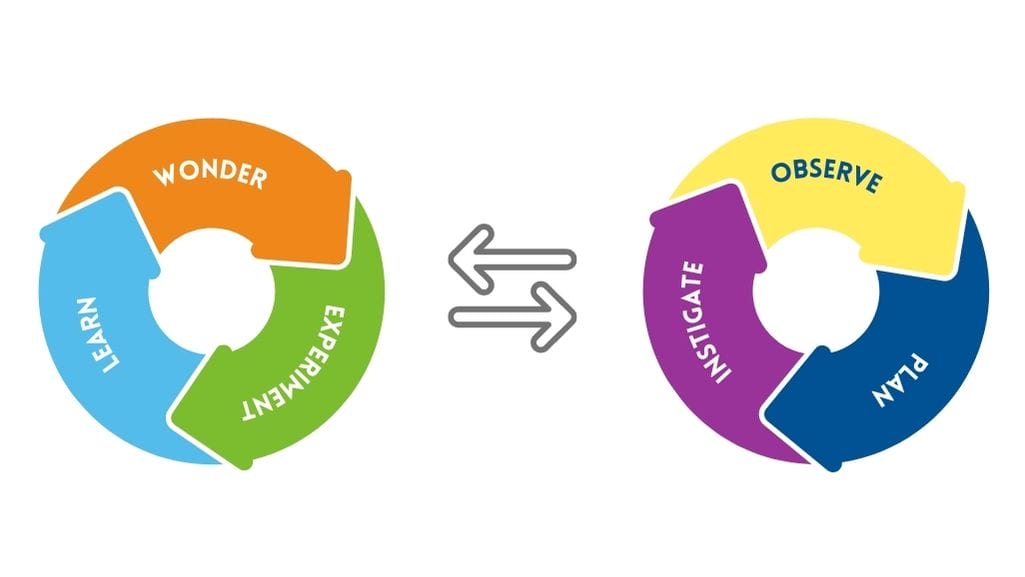The following activity is part of a series we’re creating to support students, teachers, and caregivers, during this unprecedented time. Read more about the project here. If you try this activity with your student(s), we’d love to see what you do. Share your journey via the #Inspired2Learn hashtag on your preferred social platform.
Created by: Aleta Margolis
Discipline: writing, science, math/graphing, geography
Age level: any
Time: 30 min to all day
Materials: smartphone or other device to track time; Heart Rate Monitoring Sheet
Virtual learning shouldn’t mean sitting still in front of a screen. Remind your students (and yourself!) that our bodies don’t exist solely to carry our heads around.
What to do:
Ask students, “What kinds of vigorous exercise can you think of? This should be an activity that is really challenging physically, that you could do for a full 5 minutes, and that would make you work really hard.” Brainstorm, and record, the activities students suggest.
Share the following instructions/challenges with your students:
Take your resting heartbeat. If you have a smartphone or fitness tracker, you can use that. Otherwise use this as an opportunity to learn how to find and take your pulse, old-school style: Gently place your index and middle fingers over the inside of your wrist (on the side closer to your thumb); adjust the pressure until you can feel your pulse, well, pulsing. Or try your carotid artery on the side of your neck, just under your jaw on either side. Use a stopwatch or counter or the second hand on a clock to mark 60 seconds. Enter your resting heart rate for one minute on this sheet.
Want to instigate a little thought at this point? Ask your students why we take pulses using arteries instead of veins. Ask why we take pulses at all…why is a person’s pulse considered a useful measure of health? And furthermore, if we are measuring heart rate, why don’t we just put our hands over our hearts instead of our wrists or necks?
Do five minutes of vigorous exercise. Vigorous exercise includes jumping jacks, push-ups, running, jumping rope, burpees, cartwheels, sit-ups, rolling down a hill (and climbing back up and rolling down again).
Want to instigate a little more thought at this point? Ask your students what vigorous means. Encourage them to check out the Latin word vigere, and find out what it means. Challenge them to think of other words that might stem from that same root, in English and other languages. (Ask these questions before students begin exercising…or perhaps holler them out while they are exercising!)
Take your pulse immediately following the exercise. Enter it on this sheet.
Want to instigate more thought? Ask, “Once you stop exercising, do you think your heart rate immediately after exercise will be the same as it will be 50 seconds later? If not, what can you do to get a more accurate heart rate?”
Take your pulse again at the 1 minute mark. Enter it on the sheet.
If you want to instigate even more thought, ask students how they think they’ll manage to get an accurate heart rate immediately after exercising and then again at 60 seconds out. How will they plan their time in order to accomplish this? Hint: look at the question above!
Take your pulse again at the 5 minute mark. Enter it on the sheet.
Engage your students in observations of what happened.
Extensions:
If students can work in pairs, one student can serve as the observer and count their partner’s breath rate (number of breaths per minute) pre-exercise, immediately after exercise, one minute after exercise, and five minutes after. Then partners can switch roles and repeat the activity. In this case, simply add three ‘breath rate’ columns to the tracking sheet. Discussion questions can explore the relationship between heart rate and breath rate.
Consider challenging your students to engage in this activity every day. Set a time of day for this challenge. Go further by extending the period of vigorous exercise to 6 minutes on the second day, 7 minutes on the third day, etc. See what happens to heart/breath rates and recovery times.
Students can create graphs – simple to complex – based on the data they collect about heart rates and breath rates. Each student can graph their own information; or students can graph the information for the entire class (including the teacher – you should participate too!).
See our instructional model here.




















